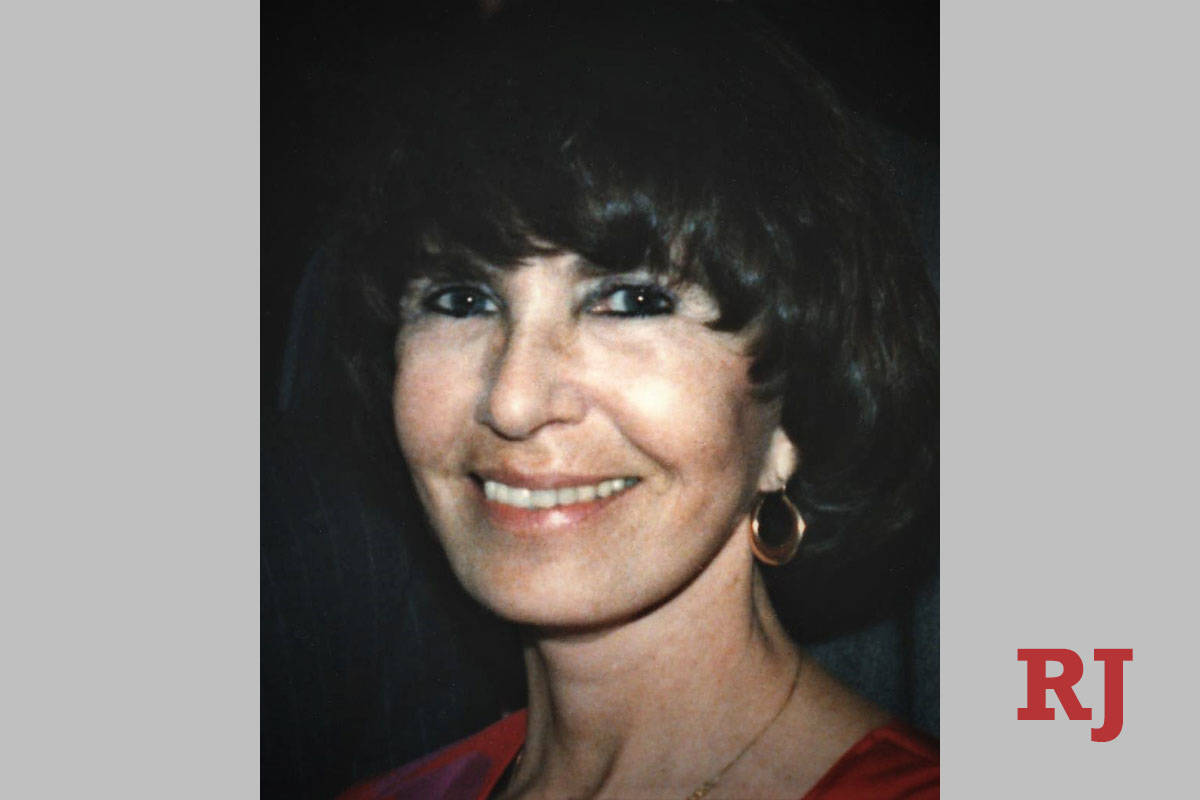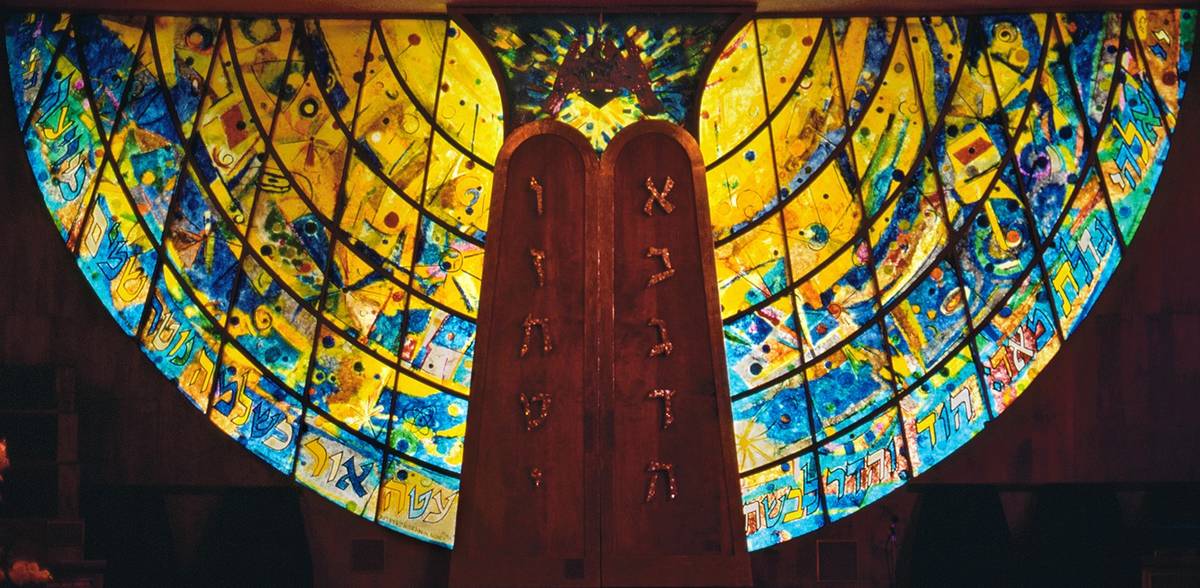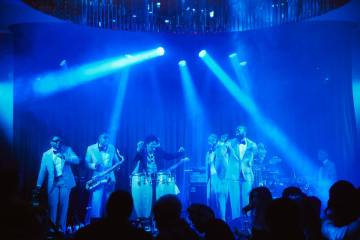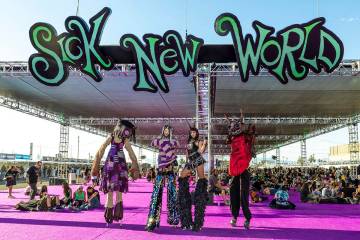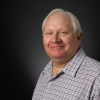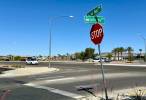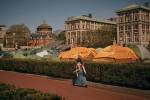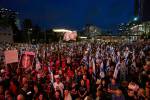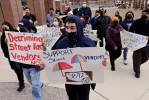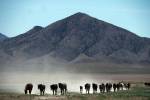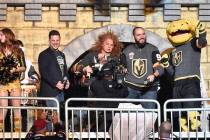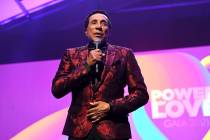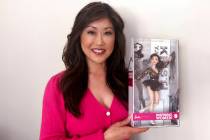Artist and longtime UNLV professor Rita Deanin Abbey dies
Rita Deanin Abbey, a prominent Las Vegas artist, teacher and author who often found her artistic inspiration in nature, died March 20.
Abbey, 90, had lived in Las Vegas since 1964, and several of her artistic creations can be admired throughout the valley.
Abbey was “the most important unknown artist in Southern Nevada,” said Patrick Gaffey, retired cultural program supervisor with Clark County Parks and Recreation who helped to create Clark County’s public art project. “She’s just hugely important and she kind of intentionally stayed out of the limelight the last couple of decades, at least.”
Gaffey recalls arranging a tour of her home and studio several years ago for attendees of a national arts conference.
“They were amazed,” he said. “After they had seen a certain amount of her work, they just walked around with their mouths open, saying, ‘Why haven’t we heard of Rita Deanin Abbey before?’”
Abbey was born in Passaic, New Jersey, to Russian and Polish Jewish immigrants Joseph and Frieda Deanin. She began her career as a visual artist at Goddard College in Vermont and the Art Students League of New York and through classes with painter Hans Hofmann.
She received a Master of Fine Arts degree from the University of New Mexico. It was there that she met author Edward Abbey, her first husband and the father of her two sons.
Abbey moved to Las Vegas in 1964 and became a professor in the arts department of what would become UNLV. In addition to teaching classes in drawing, painting and color theory, Abbey developed interdisciplinary classes with the school’s science department, according to UNLV University Libraries’ Southern Nevada Jewish Heritage Project.
Abbey taught at UNLV for 22 years, said her son, Joshua Abbey. “She kept her relationships with former students for years and years. Many of her students stayed in touch with her and some worked with her.”
Jerry Schefcik, director of galleries at UNLV, took classes from Abbey during the early ’70s while he was attending UNLV.
“She was always encouraging, always very kind,” Schefcik said.
Nearly two decades later, Schefcik returned to UNLV as galleries director and reconnected with Abbey. She remembered him and even returned a drawing of his that she had kept for use as an example to students over the years.
“It just struck a wonderful chord,” Schefcik said. “She was always thoughtful and encouraging and positive.”
As an artist, Abbey had 50 individual exhibitions, including a major retrospective at the Palm Springs Art Museum. She also participated in more than 100 national and international group exhibitions.
Abbey’s work included drawings, watercolors, paintings and prints, as well as “three-dimensional work in every conceivable medium,” Gaffey said. “You name the medium and she was doing something.”
In addition to creating thousands of individual works of art in mixed media, Abbey produced six books.
Among Abbey’s works is an 11-ton, 20-foot steel sculpture, “Spirit Tower,” she created in 1993. The piece was commissioned by the Las Vegas-Clark County Library District for the Summerlin Library and Performing Arts Center.
In 2000, she completed “Isaiah Stained-Glass Windows” for the main sanctuary of Temple Beth Sholom. Rabbi Felipe Goodman recalled that Abbey designed the project knowing that light pouring through the windows “was going to be like an inspiration to people praying in the temple.”
The piece also incorporates glass from all over the world. “She tried to capture the international nature of the Jewish people, that we are all over the world,” Goodman said.
“I think she was an incredibly talented artist, and her dedication to what she was doing clearly shows.”
Abbey’s “Wall of Creation” installation at Temple Beth Sholom’s original location on Oakey Boulevard, which she created during the late ’60s, is, son Joshua Abbey notes, “an enduring icon of Southern Nevada’s Jewish community.”
Abbey received numerous awards and commissions. Among them, according to the Jewish Heritage Project, were the Governor’s Seventh Annual Visual Arts Award for the State of Nevada in 1986, and the Las Vegas Arts Commission’s Lifetime Achievement Award for Excellence in the Arts in 2012.
Most of her work remains in the possession of her family. The Desert Space Museum, nearing completion in Northwest Las Vegas on the site of her home and studio, will become the public display venue for her large-scale sculptures and life’s artwork when it is completed in late summer or early fall, Joshua Abbey said.
Abbey’s “love of the desert and fascination with patterns in nature influenced her extraordinary abstract expressionist sensibilities,” he said. “Her intellectual curiosity and wisdom informed her creative process.”
Abbey is survived by her husband, Robert Belliveau, her son, Joshua, and his wife, Yve Eiholzer-Abbey, and her son, Aaron Abbey, and his partner Karen Kita. A traditional Jewish service and burial took place March 22.
Contact John Przybys at jprzybys@reviewjournal.com. Follow @JJPrzybys on Twitter.



